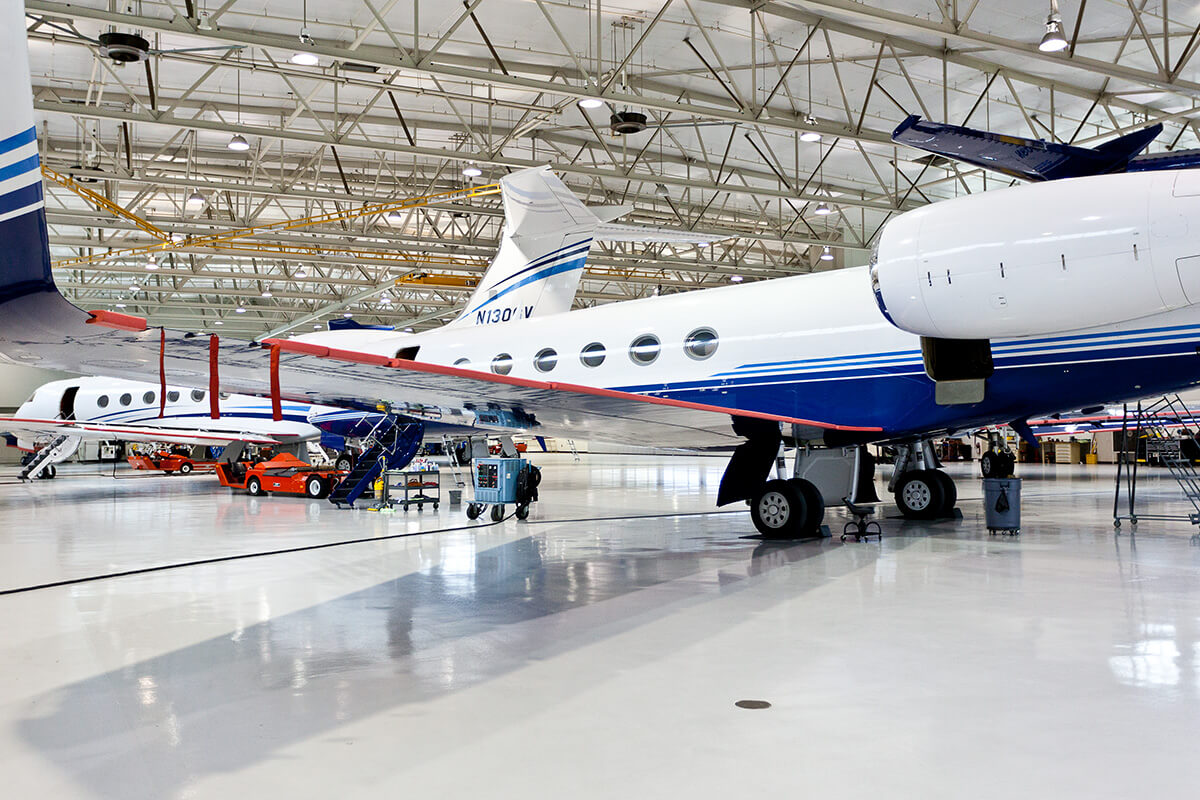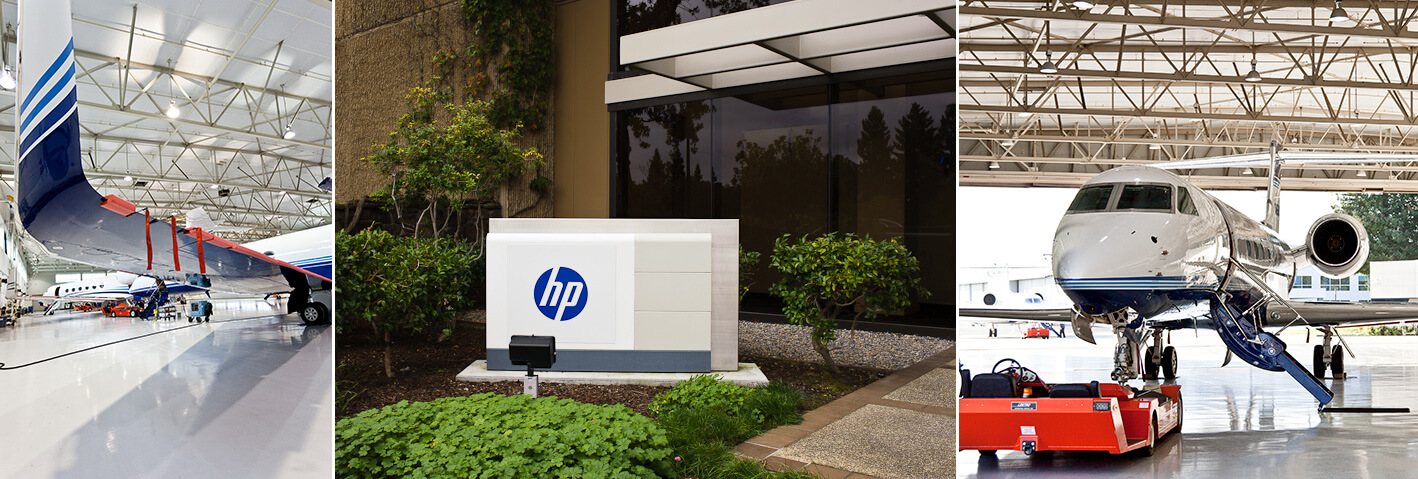
The world-renowned tech leader offers practical advice for companies of all sizes on overseas operations.
May 11, 2012

In the 1960s, Hewlett-Packard began using a piston single airplane to help support its burgeoning technology business. Within a few years, the Silicon Valley company moved up to piston twins and later Sabreliner jets, which were the workhorses of a Monday-to-Friday shuttle that flew for 30 years between HP’s headquarters in Palo Alto and other sites in California.
Today, the world’s largest IT company operates in more than 170 countries, and its flight department has been transformed from a primarily scheduled domestic operation to an on-demand operator that flies worldwide in support of the company’s enterprises.
“Business aviation has been a big part of growing HP,” said Director of Aviation Richard Walsh. “Up until 10 years ago we were very shuttle-focused.” However, as HP’s transcontinental U.S. and international flying increased, the company acquired large-cabin, long-range aircraft, eventually standardizing on one type to minimize training, maintenance and parts costs.
“A typical international mission involves leaving late at night from the West Coast and flying to Asia or Europe,” explained Walsh, who says that using a business jet instead of flying by airline saves at least one day on both ends of such trips. Plus, passengers are more productive on board the company airplane and can sleep en route, arriving refreshed and ready to conduct a full day’s business at the destination. Weeklong trips to several continents are not uncommon.
THE CHALLENGES OF GOING GLOBAL
In making the transition to international flying, Walsh says the flight department had to rethink virtually every aspect of its operation, from staffing models to crew rest requirements to outsourcing needs.

“Clearly, we were taxing our vendors to support the sheer amount of change,” said Walsh. “So we asked, ‘How do we increase the capabilities within HP to support short-notice, 24-hour operations? And how do we balance that with outsourcing?’”
HP conducts cost/benefit analyses to determine what will be handled internally and what will be outsourced. The security implications of every mission are assessed by an in-house threat/risk analyst who monitors the destinations the company flies to, identifies potential problems and provides security briefings. In fact, security and flight risks are examined in parallel processes, which enables the flight department to fly on short notice and offer travelers options.
Regardless of how much external support is required for a trip, Walsh says it is important to manage relationships with vendors to ensure they are prepared for the significant challenges of operating overseas.
In dealing with the inevitable hiccups, Walsh said it is important to have “a solid relationship with your OEM, making sure they understand the nature of the mission and your support requirements. Developing a specific maintenance-support model for your mission and getting those processes in place with your vendor are critical.”
Walsh also recommends establishing a realistic timeline for getting aircraft parts delivered to remote parts of the world. “Some of the biggest challenges can be replacement parts clearing customs.” Also, contingency travel plans should be put in place – either another company aircraft in the region, supplemental lift or using the airlines, if necessary.
“The biggest maintenance challenge we face is an aging fleet,” Walsh noted. “As we are learning how the aircraft ages, we have had to change processes.”
HP has upgraded avionics to increase capabilities and reliability and established a flight operations quality-assurance program that helps collect data and measure the effect of fatigue on crews during long-range flights. “Having a standardized fleet produces enough data for predictive risk management,” said Walsh.
CHANGING RESPONSIBILITIES, SCHEDULING
In going global, HP decided to shift some responsibilities from its pilots to its dispatchers. Tom Collins, HP’s dispatch manager, says he now faces more complex challenges.
“We need to think on an international basis,” explained Collins, who ensures that passengers and crew comply with not only U.S. rules (such as Customs and Border Protection’s Advance Passenger Information System), but also with other countries’ requirements. Collins, who has a master’s in criminal justice and has been certified by the Transportation Security Administration, also serves as a “second set of eyes” on security issues.

Personnel scheduling also has changed. “An international operations schedule is not as predictable [as a domestic one],” said Walsh, “and fatigue is a huge issue that has to be proactively managed by the company.”
“We have a nocturnal mindset,” said Collins. For example, if an HP aircraft is operating in Europe, dispatchers might begin working at 3:30 a.m. Pacific time. In addition, HP pilots alter their diet and rest cycles to deal with circadian lows.
Another change HP has made is to send a maintenance technician/flight attendant on certain international flights. When an aircraft is scheduled to be away from home for a month, the technician can monitor the health of the airplane daily and coordinate any needed inspections with the OEM or service vendor. This enables the flightcrew to focus on flying duties.
REQUIREMENTS VARY BY COUNTRY
When traveling to distant locations, HP’s dispatchers must coordinate tech stops to take into account the need to refuel and change crews. But each foreign destination comes with its own unique set of challenges.
In China, for example, HP makes sure its pilots have two different visas: a crew visa to operate an aircraft into or out of the country and a separate visitor/tourist visa for company pilots who enter the country via airline.
HP has substantial business interests in India and China, and Walsh says the biggest challenge in operating there is a nascent infrastructure and the need to obtain slots well in advance of a trip. He estimates that it takes a minimum of five to seven days’ notice to go to India and 48 to 72 hours to go to China.
While HP’s flight operations manual has been revised to include the procedures and processes that should be used for international missions, it is the flight department staff that ultimately must deal with last-minute challenges.
Besides the inherent logistical complexity of an overseas mission, “It is not unusual to have 60 changes to an international mission before it is actually dispatched,” said Walsh. “The challenge it places on pilots, dispatchers and vendors is significant.”
“There’s always going to be challenges in this style of operation, but our job is to manage the information exchange and make reason out of these challenges,” said Collins. “The better you are at managing changes, the more you are able to accommodate complex passenger expectations.”

A STRATEGIC APPROACH TO STAFFING
HP has taken a strategic approach to staffing. An intern program helps develop people who have a cross-functional background and can serve in multiple roles. Also, HP rotates employees into different jobs to give them an opportunity to develop expertise in other disciplines.
Walsh calls these initiatives “critical to our success. But we have to look at hiring from a tactical standpoint, too. We need turnkey solutions – hiring international captains, mechanics or contractors who are ready to go.
“As leaders, our number-one priority is talent development,” Walsh continued. “We need to surround ourselves with the best people.” The key is determining if they are they a good fit for the organization.
Walsh says it has become more challenging to find the right people. The talent pool is shrinking, and the high cost of living in the San Jose area also is a factor. All this requires outside-the-box solutions, says Walsh.
Training of employees also is critical. “You don’t ever want to underestimate the impact training has on international operations,” said Walsh, who is exploring distance learning and more internal programs to enhance personnel capabilities.
HP also has a succession plan that helps determine upcoming key hires, as well as gauge what job rotations and professional certifications need to take place.
THE WAY FORWARD
Long term, Walsh believes that flight department managers must continue to meet the on-demand travel needs of their customers.
“We have to ensure that business aviation stays relevant. If we can’t move the needle on infrastructure in certain countries and with certain vendors, we will put ourselves out of business. Corporations are moving so fast, you need to be six months ahead of where your company is, prepared for the next strategic move and have the ability to accelerate a company’s business plans.”
TEN TIPS FOR A SUCCESSFUL INTERNATIONAL TRIP
- Conduct cost-benefit analyses to determine what will be handled internally and what will be outsourced.
- Examine security and flight risks simultaneously to enable last-minute operations.
- Manage relationships with vendors to ensure they are prepared for challenges when operating internationally.
- Develop a specific maintenance-support model and get those processes in place with vendors.
- Know when to send a maintenance technician/flight attendant on certain flights.
- Establish a realistic timeline for getting aircraft parts delivered to remote areas.
- Expect a number of changes to an international mission before it is actually dispatched.
- Be willing to change staffing responsibilities as needed.
- Never underestimate the value of training employees for international missions.
- Always have a contingency plan.


 International Business Aviation Council Ltd.
International Business Aviation Council Ltd.